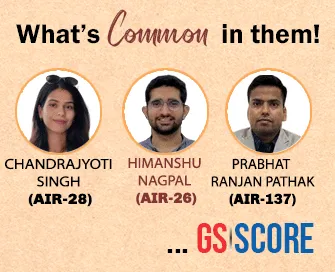

5th June 2025 (11 Topics)
Context
The Union Cabinet has recently approved the inclusion of caste enumeration in the forthcoming Census exercise, scheduled after delays due to the COVID-19 pandemic. This will mark the first comprehensive caste count since the 1931 Census, providing critical data for policy-making and social justice initiatives.
Caste Enumeration in India’s Next Census: Key Developments and Implications
1. Introduction: Census of India Overview- The Census of India is the largest single source of a vast range of demographic, socio-economic, and housing data in the country.
- Conducted every 10 years under the Census Act, 1948 and Census Rules, 1990.
- The last completed Census was in 2011; the next was scheduled for 2021 but postponed due to the COVID-19 pandemic.
- Census is conducted in two phases:
- Phase 1: House listing and housing census
- Phase 2: Population enumeration, including data on individuals
- The upcoming Census will include comprehensive caste enumeration, a major development after nearly a century (last full caste count was in 1931).
- Previously, the Census only enumerated Scheduled Castes (SCs) and Scheduled Tribes (STs) as separate categories.
- Caste enumeration is crucial for:
- Understanding the current social composition of the population
- Designing and implementing affirmative action policies such as reservations in education and employment
- Monitoring socio-economic disparities and planning welfare schemes for Other Backward Classes (OBCs) and other groups
- Facilitating academic research and social justice advocacy
- The last comprehensive caste enumeration was during the British era in 1931. Since independence, caste data has been collected only for SCs and STs due to political and administrative reasons.
- There has been longstanding demand from various political parties, social groups, and researchers to resume caste enumeration to better understand caste dynamics and improve policymaking.
- The government’s decision to include caste in the 2027 Census aligns with these demands and aims to generate granular, reliable caste data.
- The Census will use 24 lakh enumeration blocks finalized for the 2021 exercise; these blocks will now be used for the 2027 Census.
- Approximately 30 lakh enumerators will be deployed, including many government school teachers.
- Training manuals are being updated to include instructions on caste enumeration, and special training will be provided on collecting caste data accurately.
- A mobile application will be used for data collection, incorporating a new drop-down menu to record caste details alongside SC/ST categories.
- Caste data will be collected in the second phase (population enumeration).
- Accuracy and Authenticity:
- Self-declared caste information may lead to misreporting, either intentionally or due to lack of awareness of official caste classifications.
- Differentiating between sub-castes, clans, and communities accurately poses challenges.
- Political Sensitivities:
- Caste data can become a politically charged issue, potentially leading to identity politics and social tension.
- There may be resistance or backlash from some groups fearing loss of privileges or changes in reservation policies.
- Data Privacy and Confidentiality:
- Ensuring the privacy of caste data is crucial to maintain public trust.
- The government needs robust legal frameworks to prevent misuse or leakage of sensitive information.
- Operational Complexity:
- Training millions of enumerators to correctly identify and record caste data requires significant resources and planning.
- Harmonizing caste categories with official lists (such as SC/ST/OBC lists) and local variations is a logistical challenge.
- Social Justice:
- Provides the government with updated data to identify deprived communities and target welfare programs more effectively.
- Helps in assessing the socio-economic status of OBCs and other communities that currently lack detailed data.
- Policy Formulation and Monitoring:
- Enables evidence-based policymaking, with allocation of resources according to actual population distribution.
- Assists in evaluating the impact of reservation and affirmative action policies, leading to better policy calibration.
- Academic and Research Use:
- Opens up new avenues for sociological and demographic research on caste dynamics and social stratification.
- Strengthening Federal Governance:
- Allows states to develop region-specific policies based on accurate caste demographics.
- Legal and Institutional Framework:
- Strengthen data protection laws specific to Census data.
- Establish a statutory body or committee to oversee caste data usage and privacy.
- Awareness and Sensitization:
- Conduct nationwide awareness campaigns explaining the importance and confidentiality of caste data.
- Engage civil society and community leaders to encourage accurate reporting.
- Technical Measures:
- Use technology to cross-verify caste data with existing government records (e.g., caste certificates, SC/ST lists).
- Develop a standardized and updated caste classification system to reduce ambiguity.
- Policy Transparency:
- Make aggregated caste data publicly available for transparency and academic use, while ensuring individual anonymity.
- Post-Census Utilization:
- Use caste data to refine reservation policies and to launch new welfare schemes for underserved communities.
- Monitor social mobility trends and inequalities to inform future development plans.
More Articles

